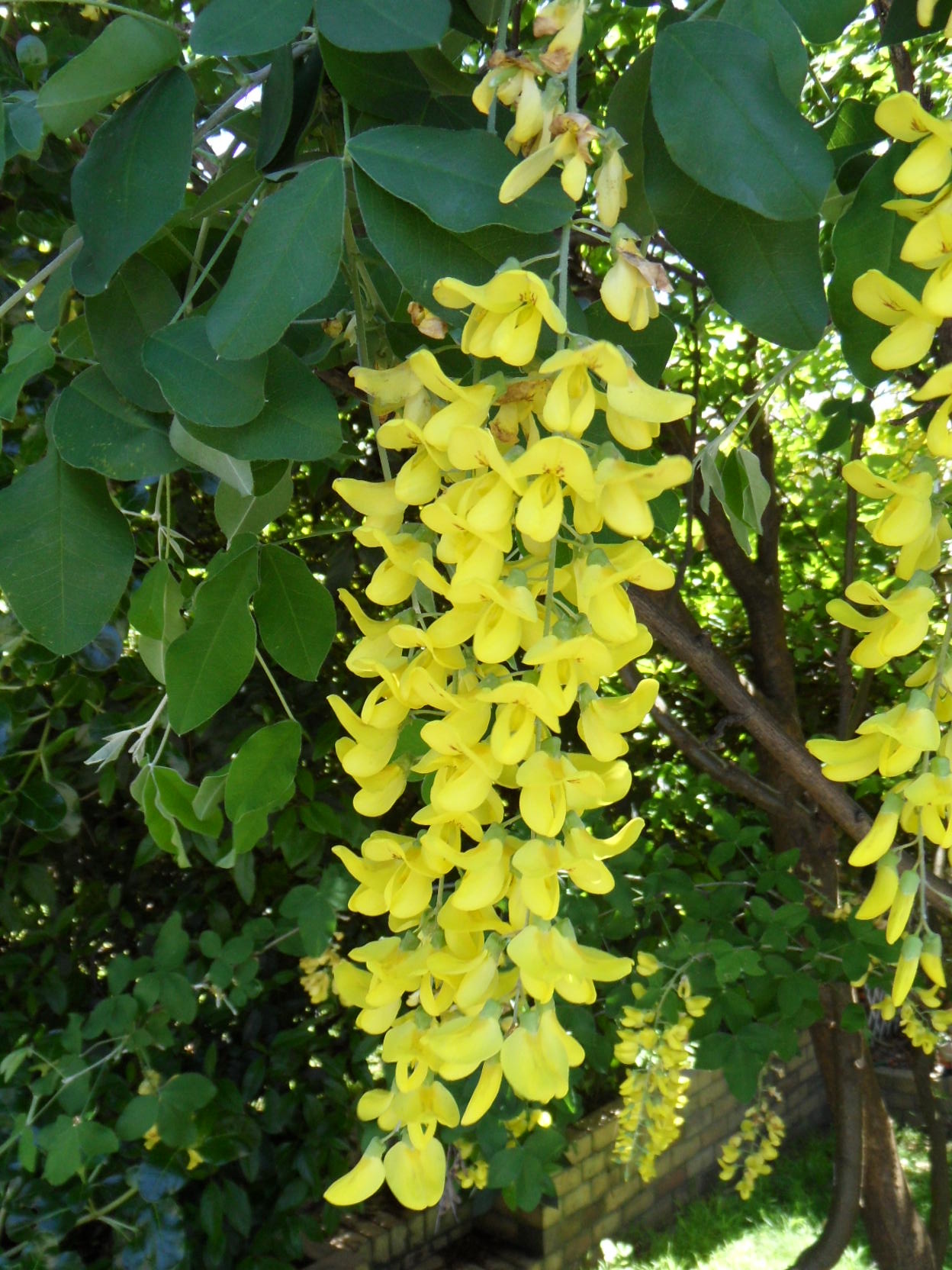
Large shrub or small tree to 5-6 m tall with branches close to the ground. Branchlets hairy. Leaves alternate, compound, stalks 5-8 cm long. Leaflets 3, folding at night, more or less elliptic, mostly 4-7 cm long, blunt with a tiny point at the tip, downy below, leaflet stalks about 2 mm long. Flower clusters in long silky chains 10-30 cm long. Flowers yellow, about 2 cm long; late spring and early summer. Fruit pod 5-8 cm long.
A lime-loving plant largely superseded by the hybrid below. All parts are poisonous, especially the young fruits; the seeds may be fatal to children when eaten.
L. alpinum (Mill.) Bercht. &Presl, Scotch Laburnum, is occasionally offered and differs in having a more or less hairless pod with a winged suture.
L. × watereri (Kirchn.) Dipp. is a hybrid, Laburnum alpinum × L. anagyroides; it occurs both naturally and in horticulture and is best known through the cultivar.
C and S Europe.
Source: (2002). Fabaceae. In: . Horticultural Flora of South-eastern Australia. Volume 3. Flowering plants. Dicotyledons. Part 2. The identification of garden and cultivated plants. University of New South Wales Press.

The seed pod is not so hairy as in l. anagyroides and is not winged and hardly thickened. 'Vossii', Voss's Laburnum, has flower clusters fragrant and up to 50 cm long, with seed pods carrying only 1 or 2 seeds. A selection made near Boskoop in Holland in the late 19th century and described in 1875 by Cornelis de Vos of Hazerswoude. Syn. L. × vossii hort.